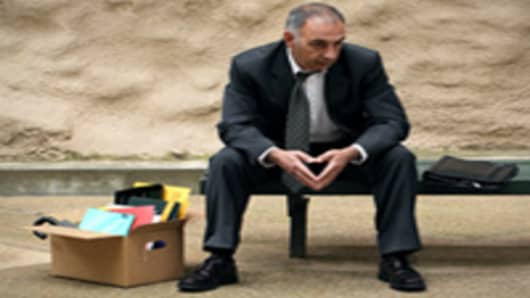November's jobs report, as expected, showed a slight pickup in hiring, but the suprising positive —a lower unemployment rate—could be masking a troubling trend.
Job creation in November totaled 120,000, with 140,000 coming from the private sector, slightly lower than expected. But the big surprise was the four-tenths of a point decline in the unemployment rate to a 2-1/2 year low of 8.6 percent.
"The market focuses on headlines, and if you include the prior two months being revised up, and you think about the three months together, there was more employment than expected," said Peter Boockvar, market strategist at Miller Tabak.
But "underneath the hood, it's still sluggish job growth," he added. "We're only averaging 132,000 jobs this year and seeing the biggest drop in the labor force since January, and the participation rate at near record lows."
Economists had expected 125,000 jobs in total, and forecast that the private sector added a total 150,000 jobs in November, offset by layoffs in the public sector. The unemployment rate was expected to hold steady at 9 percent.
But the surprising drop in the unemployment rate now takes it to a level the Federal Reserve did not expect to see until late next year, when its forecast showed an average 8.5 to 8.7 percent.
Boockvar said the unemployment rate fell in part because a 278,000 gain in the household survey was in addition to a big drop in the labor force of 315,000, the most since January. The all in rate, or those underemployed—a measure that includes part time workers and those who recently stopped looking for work—fell from 16.2 percent to 15.6 percent.
Stocks traded higher in the morningin part on the jobs report and also headlines from Europe. But the market gave up some of its sharp gains.
"The market easily figures it out ... sometimes it takes a half a day," said Stuart Freeman, chief equity strategist at Wells Fargo Advisors.
The participation rate fell to 64 percent from 64.2 percent, which Boockvar says is just 0.1 percent shy of being the lowest since 1984.
"If you look at the data, discouraged workers were up 129,000, which says 60 percent was from some other factor. It could have been anything. People starting new businesses, going back to school," said Deutsche Bank chief U.S. economist Joseph LaVorgna.
"I don't think you're supposed to come away too negative on this report. It's another piece of evidence, that suggests the economy, to this point, has weathered various shocks, not the least of which is Europe, and that it accelerated in the second half of the year," LaVorgna said.
Friday's report included revisions to September and October numbers that increased the job count by 72,000.
Retail accounted for 50,000, more than a third of all new private sector jobs in November, raising questions about how permanent they will be. Retail employment has averaged a 14,000 monthly increase since reaching an employment trough in December, 2009.
Employment in professional and business services trended higher in November to 43,000, and the hospitality industry added 22,000 jobs.
Manufacturing jobs, expected to show growth, were little changed since July.
Follow Patti Domm on Twitter: @pattidomm



